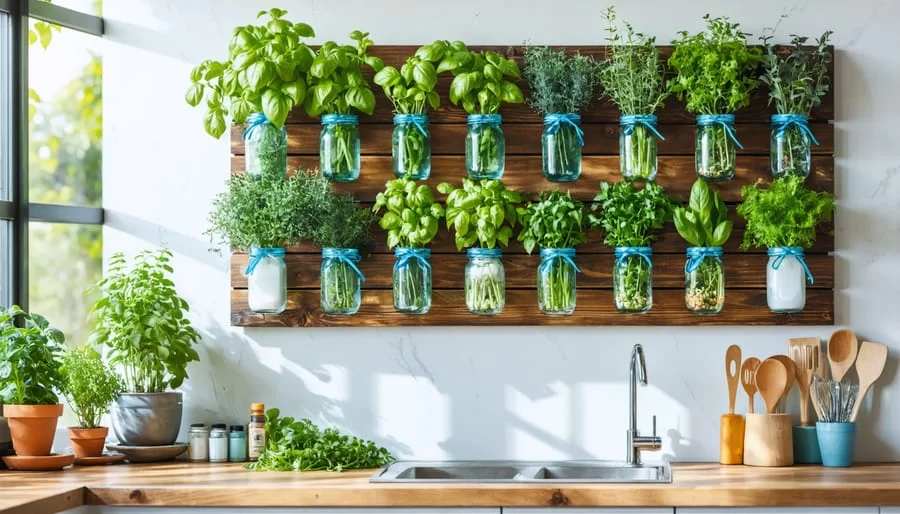
- Why Create a DIY Herb Garden for Your Kitchen?
- Choosing the Right Herbs for Your Kitchen
- Essential Tools and Materials for Your Herb Garden
- Step-by-Step Guide to Building Your Herb Garden
- Care and Maintenance Tips for Your Herb Garden
- Why You Should Consider Improvement for Your Kitchen
Why Create a DIY Herb Garden for Your Kitchen?
Having a fresh supply of herbs at your fingertips is not only convenient but can also transform your cooking experience. A DIY herb garden in your kitchen offers an array of benefits. First, growing your own herbs is both satisfying and cost-effective. You don't have to keep buying small packets of herbs from the store, and you'll always have fresh ingredients available to enhance your dishes. Additionally, cultivating your own herbs helps reduce your carbon footprint by cutting down on transportation emissions associated with store-bought produce. Finally, growing your own garden allows you to tailor the herbs you grow to your specific culinary needs, which is perfect for anyone passionate about cooking.
Choosing the Right Herbs for Your Kitchen
When it comes to selecting herbs for your kitchen garden, it's important to pick those that thrive indoors and are useful for your cooking needs. Popular choices for kitchen herb gardens include basil, thyme, mint, rosemary, parsley, and chives. Each herb has its own unique requirements in terms of sunlight, temperature, and water, so it's important to choose herbs that align with the space available in your kitchen. For instance, basil and mint prefer bright, indirect light, while rosemary thrives in a sunny spot. Think about what you cook most often and choose herbs that will complement your dishes.
Essential Tools and Materials for Your Herb Garden
Building a DIY herb garden doesn't require a lot of fancy tools, but there are a few essentials you'll need to ensure your herbs grow successfully. Here's a list of what you'll need:
- Small containers or pots (make sure they have drainage holes)
- Quality potting soil designed for herbs
- Herb seeds or small starter plants
- Watering can or spray bottle
- Label tags (optional, but useful to keep track of your herbs)
These simple tools and materials will help you create a thriving herb garden that’s easy to maintain. You can also consider using repurposed items like mason jars or old cups for your pots, which adds a personal and eco-friendly touch to your garden.
Step-by-Step Guide to Building Your Herb Garden
Now that you have your materials ready, it's time to get started on your DIY herb garden. Follow these simple steps to create a thriving kitchen garden:
- Select Your Location: Choose a spot in your kitchen that receives enough light for the herbs you're growing. A sunny windowsill or counter near a window is ideal.
- Prepare the Pots: Fill your containers with potting soil, leaving a little space at the top for watering. Make sure your pots have drainage holes to avoid waterlogging.
- Plant the Seeds or Starter Plants: For seeds, follow the planting instructions on the packet. For starter plants, gently remove them from their containers and place them into the pots, covering the roots with soil.
- Water and Label: Water your herbs lightly to settle the soil, but avoid over-watering. Use labels to keep track of what you’re growing.
- Place in a Sunny Spot: Ensure your herbs get adequate sunlight. If you don’t have enough natural light, consider using grow lights to supplement it.
With these simple steps, your kitchen herb garden will start to flourish in no time. You’ll be able to harvest fresh herbs whenever you need them, and the satisfaction of growing your own food will make your cooking even more enjoyable.
Care and Maintenance Tips for Your Herb Garden
To ensure your herb garden continues to thrive, it’s essential to keep up with regular care and maintenance. Here are some key tips:
- Watering: Herbs need consistent moisture, but be careful not to overwater. Water them when the top inch of soil feels dry.
- Pruning: Regularly prune your herbs to encourage growth and prevent them from becoming too leggy. This also helps keep your plants healthy.
- Fertilizing: While herbs don't require a lot of fertilizer, using a balanced, organic fertilizer once a month can promote strong growth.
- Harvesting: Harvest your herbs regularly to encourage new growth. Snip off leaves from the top of the plant, leaving the roots intact.
By following these simple maintenance steps, you’ll ensure that your herb garden remains productive and continues to provide fresh herbs for your cooking.
Why You Should Consider Improvement for Your Kitchen
Once you have your DIY herb garden set up, it’s a great time to consider other kitchen improvements. A well-designed kitchen can enhance your cooking experience and make daily tasks more enjoyable. Whether you're looking for new kitchen gadgets, more space, or aesthetic upgrades, Improvement offers a wide range of products and services that can help make your kitchen even better. Explore ideas to create the kitchen of your dreams while enjoying the satisfaction of growing your own herbs right at home.








